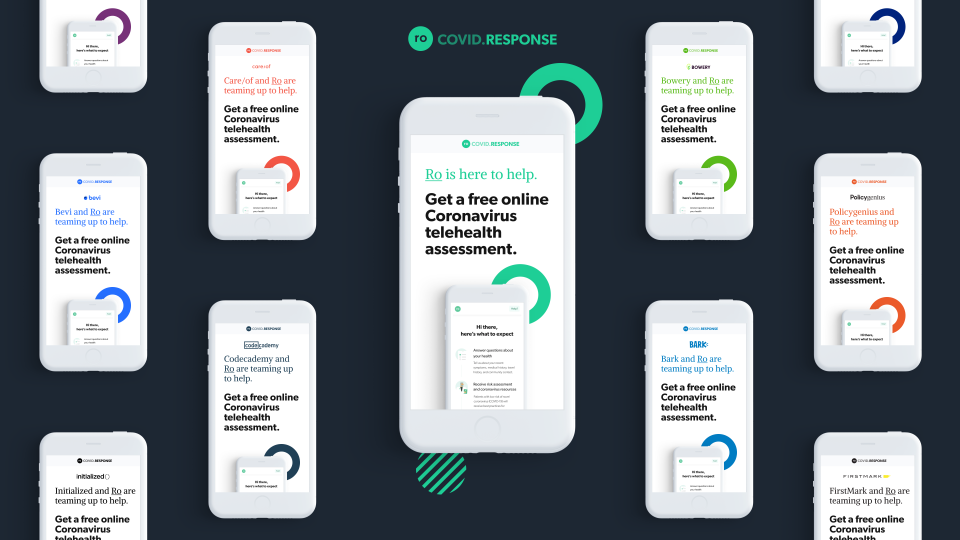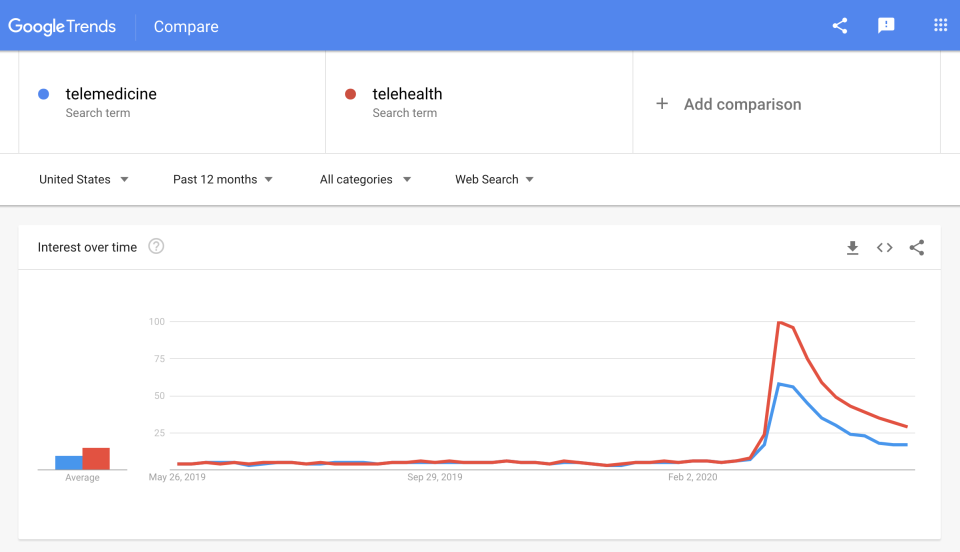Telehealth is going to 'become the default' for patients: Ro CEO
Telehealth companies enabling individuals to see physicians without stepping foot into a physical doctor’s office are having their moment as the coronavirus pandemic confines patients across the country largely to their homes.
But even in a post-virus world, virtual visits are here to stay, according to the CEO of one digital health-care startup.
“Americans’ basic health-care needs aren't going anywhere,” Zachariah Reitano, co-founder and CEO of Ro, said in an interview during Yahoo Finance Breakouts. “While a lot of individuals are forced to stay at home right now for obviously the crisis that we're in, they still need access to a doctor. And I think that this has changed telemedicine.”
“[Telemedicine] would used to have to focus on ... the convenience aspect,” he added. “I think that there is now an added benefit, or added safety value propositions, that have been incorporated into the experience, where people have now gained a new appreciation not only for the convenience, but also for the safety. And I think moving forward we're going to see that telemedicine is going to start to become the default.”
Ro, launched in 2017 by Reitano, Saman Rahmanian and Rob Schutz, began as a digital health clinic called Roman focused primarily on treating men’s health concerns including erectile dysfunction via virtual doctor visits.
But in the years since, the company expanded to include Rory, a women-centric digital health-care clinic, along with Zero for smoking cessation and Plenity for weight management. And as shelter-in-place orders broadened earlier this year, Ro expedited the launch of its pharmacy service and now offers some 500 generic medications at $5 per month out-of-pocket for patients across about 25 states.
The timing of the expansion proved to be auspicious.
“We’re shipping more and more prescriptions than ever. April was our best month,” Reitano said. “Some of our allergy products are up 30%, all the way to smoking cessation, which is upwards of 100%, to some of our sleep products that are actually over 1,000% month-over-month growth.”
This came on top of company-wide sales growth of 330% for Ro in 2019 versus 2018, before the coronavirus pandemic. Reitano declined to provide revenue in dollar amounts for sales to date.

‘Unburdened’
Ro’s rapid growth echoes the performance of a plethora of venture-backed and public telemedicine companies since mid-March, with many of these also seeing a staggering boost in demand amid stay-in-place orders.
Publicly traded peer telehealth company Teladoc (TDOC) reported total virtual visits ballooned to 2 million in the first three months of this year, rising 92% over last year. That jump in business activity translated to a stock that’s more than doubled for the year to date.
On a wider scale, the size of the global telemedicine market could reach more than $185 billion by 2026, up significantly from an estimated value of $34.3 billion in 2018, according to new report from Fortune Business Insights. The analysts cited the “surge in product adoption due to the coronavirus outbreak.”
U.S. lawmakers also recognized the necessity of telemedicine services during the pandemic, and Congress passed legislation in March giving Medicare beneficiaries expanded access to telehealth treatment.
Ro, for its part, currently runs on a cash pay model and doesn’t take health insurance, which Reitano said keeps prices low and transparent for patients. Each physician visit on Ro costs $15, and drug prices vary.
Still, one of the arguments against telemedicine has been the concern that virtual care might lead physicians to treat symptoms of a health concern while failing to spot underlying causes, which could potentially be ascertained during an in-person visit.
And then there are concerns that the recent demand boost in telemedicine might ultimately wane as stay-in-place orders ease. A Google Trends analysis of the search terms “telemedicine” and “telehealth” showed these queries peaking in mid-March and sloping downward since, albeit without yet returning back down to pre-virus levels.

Reitano, however, said Ro hasn’t seen “any degradation” in demand yet, even in states where lockdown orders have eased more considerably than in other pandemic hot spots.
“When we’re able to open up and when people are able to see more doctors in person more easily, that’s a wonderful thing,” Reitano said. “What telemedicine can do actually, though, is really unburden the existing system.”
The pandemic “shed a light on the fact that it was very much overburdened before this, and that there were so many experiences that could be pulled out from the existing system that telemedicine could help with,” he added.
As one example, Ro launched in early March what Reitano claimed to be the first COVID-19 assessment launched by a telehealth startup in the U.S. The service walked users through a virtual screening process, relieving brick-and-mortar health-care from a flood of would-be patients coming through their doors with concerns they’d caught the virus.
And ultimately, Reitano sees telemedicine growing into a complement, rather a full replacement, for in-person doctors’ visits.
“We at Ro have a very specific point on the horizon that we're working towards,” Reitano said. “We want to be a patient's first call, we want to be their most trusted party in their health-care journey and the first place that they look to when they have a symptom or a health-care question.”
—
Emily McCormick is a reporter for Yahoo Finance. Follow her on Twitter: @emily_mcck
Read more from Emily:
What we can learn from the 17 stock market crashes since 1870
April jobs report: Employers cut a record 20.5 million payrolls, unemployment rate jumps to 14.7%
Disney earnings fall as coronavirus ‘significantly’ impacts parks, but ESPN, Disney+ shine
Warren Buffett: The American economic miracle 'has always prevailed and it will do so again'
Nike 3Q revenue tops expectations as surge in China digital sales helps offset store closures
Find live stock market quotes and the latest business and finance news
For tutorials and information on investing and trading stocks, check out Cashay
Follow Yahoo Finance on Twitter, Facebook, Instagram, Flipboard, LinkedIn, and reddit.